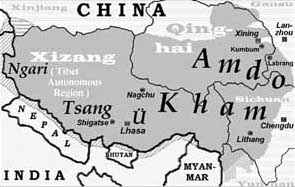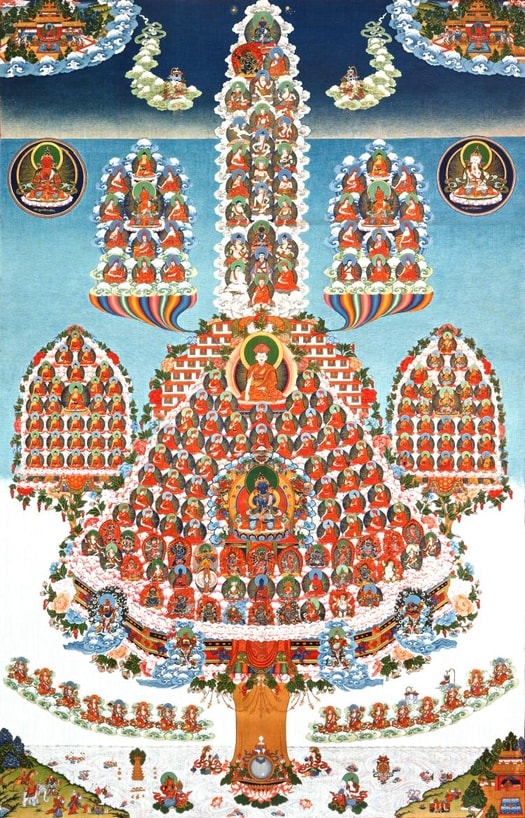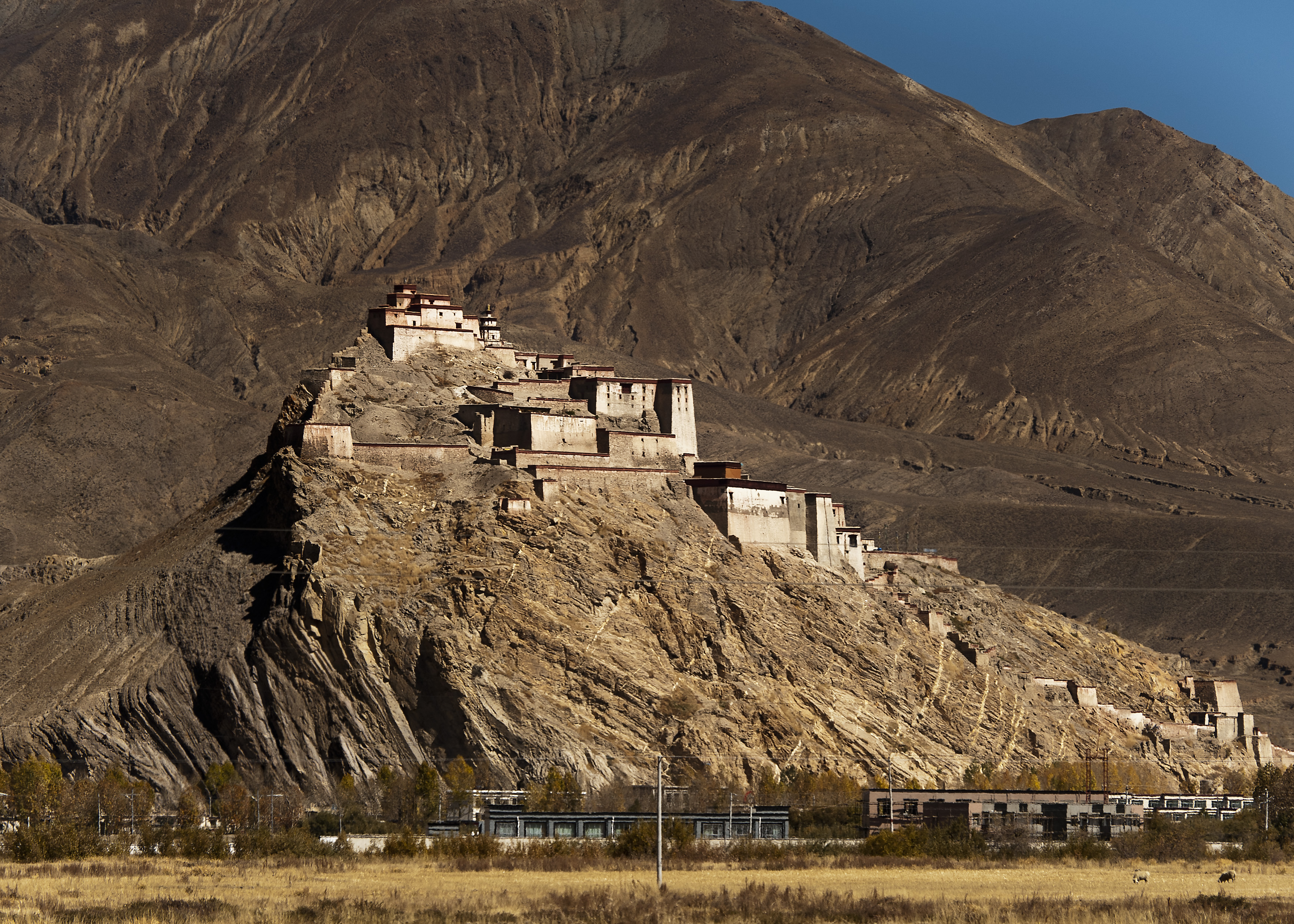|
Zhabdrung Ngawang Namgyal
Ngawang Namgyal (later granted the honorific Zhabdrung Rinpoche, approximately "at whose feet one submits") (; alternate spellings include ''Zhabdrung Ngawang Namgyel''; 1594–1651) and known colloquially as The Bearded Lama, was a Tibetan Buddhist '' lama'' and the unifier of Bhutan as a nation-state. In addition to unifying the various warring fiefdoms for the first time in the 1630s, he also sought to create a distinct Bhutanese cultural identity separate from the Tibetan culture from which it was derived. Birth and enthronement at Ralung ''Zhabdrung'' Ngawang Namgyal was born at Ralung () Monastery, Tibet as the son of the Drukpa lineage-holder Mipham Tenpa'i Nyima (, 1567–1619), and Sönam Pelgyi Butri (), daughter of the ruler of Kyishö () in Tibet. On his father's side, Ngawang Namgyal descended from the family line of Tsangpa Gyare (1161–1211), the founder of the Drukpa Lineage. In his youth, Ngawang Namgyal was enthroned as the eighteenth Drukpa or throne-holde ... [...More Info...] [...Related Items...] OR: [Wikipedia] [Google] [Baidu] |
Shabdrung Rubin
Zhabdrung (also Shabdrung; ; "before the feet of ones submit") was a title used when referring to or addressing great lamas in Tibet, particularly those who held a hereditary lineage. In Bhutan the title almost always refers to Ngawang Namgyal (1594–1651), the founder of the Bhutanese state, or one of his successive reincarnations. Ngawang Namgyal The lineage traces through the founder of the country, Ngawang Namgyal, a high Drukpa Lineage lama from Tibet who was the first to unify the warring valley kingdoms under a single rule. He is revered as the third most important figure behind Padmasambhava and Shakyamuni Buddha by the Drukpa Lineage of the Kagyu school of Tibetan Buddhism. Ngawang Namgyal established the dual system of government under the "Great Tsa Yig" legal code. Under this system, political power was vested in an administrative leader, the Druk Desi, assisted by a collection of local governors or ministers called penlops. A religious leader, the Je Khenpo, held p ... [...More Info...] [...Related Items...] OR: [Wikipedia] [Google] [Baidu] |
Ü-Tsang
Ü-Tsang is one of the three traditional provinces of Tibet, the others being Amdo in the north-east, and Kham in the east. Ngari (including former Guge kingdom) in the north-west was incorporated into Ü-Tsang. Geographically Ü-Tsang covered the south-central of the Tibetan cultural area, including the Brahmaputra River watershed. The western districts surrounding and extending past Mount Kailash are included in Ngari, and much of the vast Changtang plateau to the north. The Himalayas defined Ü-Tsang's southern border. The present Tibet Autonomous Region corresponds approximately to what was ancient Ü-Tsang and western Kham. Ü-Tsang was formed by the merging of two earlier power centers: Ü () in central Tibet, controlled by the Gelug lineage of Tibetan Buddhism under the early Dalai Lamas, and Tsang () which extended from Gyantse to points west, controlled by the rival Sakya lineage. Military victories by the powerful Khoshut Mongol Güshi Khan that backed 5th Dalai ... [...More Info...] [...Related Items...] OR: [Wikipedia] [Google] [Baidu] |
Jesuit
, image = Ihs-logo.svg , image_size = 175px , caption = ChristogramOfficial seal of the Jesuits , abbreviation = SJ , nickname = Jesuits , formation = , founders = , founding_location = , type = Order of clerics regular of pontifical right (for men) , headquarters = Generalate:Borgo S. Spirito 4, 00195 Roma-Prati, Italy , coords = , region_served = Worldwide , num_members = 14,839 members (includes 10,721 priests) as of 2020 , leader_title = Motto , leader_name = la, Ad Majorem Dei GloriamEnglish: ''For the Greater Glory of God'' , leader_title2 = Superior General , leader_name2 = Fr. Arturo Sosa, SJ , leader_title3 = Patron saints , leader_name3 = , leader_title4 = Ministry , leader_name4 = Missionary, educational, literary works , main_organ = La Civiltà Cattolica ... [...More Info...] [...Related Items...] OR: [Wikipedia] [Google] [Baidu] |
Portugal
Portugal, officially the Portuguese Republic ( pt, República Portuguesa, links=yes ), is a country whose mainland is located on the Iberian Peninsula of Southwestern Europe, and whose territory also includes the Atlantic archipelagos of the Azores and Madeira. It features the westernmost point in continental Europe, and its Iberian portion is bordered to the west and south by the Atlantic Ocean and to the north and east by Spain, the sole country to have a land border with Portugal. Its two archipelagos form two autonomous regions with their own regional governments. Lisbon is the capital and largest city by population. Portugal is the oldest continuously existing nation state on the Iberian Peninsula and one of the oldest in Europe, its territory having been continuously settled, invaded and fought over since prehistoric times. It was inhabited by pre-Celtic and Celtic peoples who had contact with Phoenicians and Ancient Greek traders, it was ruled by the Ro ... [...More Info...] [...Related Items...] OR: [Wikipedia] [Google] [Baidu] |
State Religion
A state religion (also called religious state or official religion) is a religion or creed officially endorsed by a sovereign state. A state with an official religion (also known as confessional state), while not secular state, secular, is not necessarily a theocracy. State religions are official or government-sanctioned establishments of a religion, but the state does not need to be under the control of the religion (as in a theocracy) nor is the state-sanctioned religion necessarily under the control of the state. Official religions have been known throughout human history in almost all types of cultures, reaching into the Ancient Near East and prehistory. The relation of Cult, religious cult and the state was discussed by the Ancient Rome, ancient Latin scholar Marcus Terentius Varro, under the term of ''theologia civilis'' (). The first state-sponsored Church (congregation), Christian church was the Armenian Apostolic Church, established in 301 CE. In Christianity, as the ter ... [...More Info...] [...Related Items...] OR: [Wikipedia] [Google] [Baidu] |
Nyingma
Nyingma (literally 'old school') is the oldest of the four major schools of Tibetan Buddhism. It is also often referred to as ''Ngangyur'' (, ), "order of the ancient translations". The Nyingma school is founded on the first lineages and translations of Buddhist scriptures from Sanskrit into Tibetan in the eighth century, during the reign of King Trisong Detsen (r. 710–755). Nyingma traditional histories consider their teachings to trace back to the first Buddha Samantabhadra (Güntu Sangpo) and Indian mahasiddhas such as Garab Dorjé, Śrī Siṃha and Jñānasūtra. Traditional sources trace the origin of the Nyingma order in Tibet to figures associated with the initial introduction of Buddhism in the 8th century, such as Padmasambhava, Yeshe Tsogyal, Vimalamitra, Vairotsana, Buddhaguhya and Śāntarakṣita, Shantaraksita. The Nyingma tradition is also seen having been founded at Samye, Samyé, the first monastery in Tibet. Nyingma teachings are also known for having be ... [...More Info...] [...Related Items...] OR: [Wikipedia] [Google] [Baidu] |
Punakha Dzong
The Punakha Dzong, also known as Pungthang Dewa chhenbi Phodrang (meaning "the palace of great happiness or bliss"), is the administrative centre of Punakha District in Punakha, Bhutan. Constructed by Ngawang Namgyal, 1st Zhabdrung Rinpoche, in 1637–38, it is the second oldest and second-largest dzong in Bhutan and one of its most majestic structures. The dzong houses the sacred relics of the southern Drukpa Lineage of the Kagyu school of Tibetan Buddhism, including the Rangjung Kharsapani and the sacred remains of Ngawang Namgyal and the tertön Pema Lingpa. Punakha Dzong was the administrative center and the seat of the Government of Bhutan until 1955 when the capital was moved to Thimphu. It is listed as a tentative site in Bhutan's Tentative List for UNESCO inclusion. Geography The Dzong is located between the Pho Chhu (Male) and Mo Chhu (Female) river in the Punakha–valley. The source of the Mo chu river is in the northern hills of Lighsi and Laya in Bhutan, and i ... [...More Info...] [...Related Items...] OR: [Wikipedia] [Google] [Baidu] |
Drikung Kagyu
Drikung Kagyü or Drigung Kagyü ( Wylie: 'bri-gung bka'-brgyud) is one of the eight "minor" lineages of the Kagyu school of Tibetan Buddhism. "Major" here refers to those Kagyü lineages founded by the immediate disciples of Gampopa (1079-1153) while "minor" refers to all the lineages founded by disciples of Gampopa's main disciple, Phagmo Drupa (1110-1170). One of these disciples, Jigten Sumgön (1143-1217), is the founder of Drikung. History Like with all other Kagyu lineages, origins of Drikung Kagyü can be traced back to the Great Indian Master Tilopa who passed on his teachings to Mahasiddha Naropa who lived around 10th and 11th century. The founder of the Drikung Kagyü lineage was Jigten Sumgön (1143-1217) of the Kyura clan, who was the disciple of Phagmo Drupa. According to historical account from the time, Jigten Sumgön's teachings attracted more than 100,000 people at a time, with the highest number of attendance recorded at 130,000. Several sub-schools bran ... [...More Info...] [...Related Items...] OR: [Wikipedia] [Google] [Baidu] |
Trongsa Valley
Trongsa, previously Tongsa (, ), is a Thromde or town, and the capital of Trongsa District in central Bhutan. The name means "new village" in Dzongkha. The first temple was built in 1543 by the Drukpa lama Ngagi Wangchuck, who was the great-grandfather of Ngawang Namgyal, Zhabdrung Rinpoche, the unifier of Bhutan. Trongsa Dzong Chökhor Raptentse Dzong at Trongsa which was built in 1644, used to be the seat of power of the Wangchuck dynasty before it became rulers of Bhutan in 1907. Traditionally the King of Bhutan first becomes the Trongsa Penlop (governor) before being named Crown Prince and eventually King. Built on a mountain spur high above the gorges of the Mangde Chhu, the dzong controlled east-west trade for centuries. The only road connecting eastern and western Bhutan (the precursor to the modern Lateral Road), passed through the courtyard of the dzong. At the command of the ''penlop'' the massive doors could be shut, dividing the country in two. Higher yet on the mo ... [...More Info...] [...Related Items...] OR: [Wikipedia] [Google] [Baidu] |
Paro Valley
Paro District ( Dzongkha: སྤ་རོ་རྫོང་ཁག་; Wylie: ''Spa-ro rdzong-khag'') is a district (''dzongkhag''), valley, river and town (population 20,000) in Bhutan. It is one of the most historic valleys in Bhutan. Both trade goods and invading Tibetans came over the pass at the head of the valley, giving Paro the closest cultural connection with Tibet of any Bhutanese district. The dominant language in Paro is Dzongkha, the national language. Paro contains the only international airport in Bhutan, Paro Airport. Geography Paro District is bordered by Haa District to the west, Tibet to the north, Thimphu District to the east, and Chukha District to the south. Administrative divisions Paro Districts comprises ten village blocks (or '' gewogs''): * Doga Gewog * Dopshari Gewog * Doteng Gewog * Hungrel Gewog * Lamgong Gewog * Lungnyi Gewog * Naja Gewog * Shapa Gewog *Tsento Gewog * Wangchang Gewog Environment Northern Paro District (the ''gewogs'' of D ... [...More Info...] [...Related Items...] OR: [Wikipedia] [Google] [Baidu] |
Dzong
Dzong architecture is used for dzongs, a distinctive type of fortified monastery ( dz, རྫོང, , ) architecture found mainly in Bhutan and Tibet. The architecture is massive in style with towering exterior walls surrounding a complex of courtyards, temples, administrative offices, and monks' accommodation. Characteristics Distinctive features include: * High inward sloping walls of brick and stone painted white with few or no windows in the lower sections of the wall * Use of a surrounding red ochre stripe near the top of the walls, sometimes punctuated by large gold circles * Use of unique style flared roofs atop interior temples * Massive entry doors made of wood and iron * Interior courtyards and temples brightly colored in Buddhist-themed art motifs such as the ashtamangala or swastika Regional differences Bhutan Dzongs serve as the religious, military, administrative, and social centers of their district. They are often the site of an annual ''tsechu'' or religious ... [...More Info...] [...Related Items...] OR: [Wikipedia] [Google] [Baidu] |






